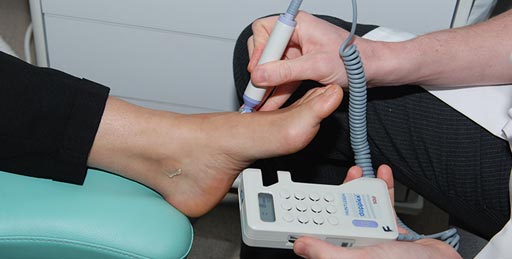Doppler Database Could Help Diagnose Heart Conditions
By MedImaging International staff writers
Posted on 02 Mar 2017
A new research project aims to build a digital library of arterial sounds recorded during the Doppler ultrasound (US) procedure.Posted on 02 Mar 2017
Podiatrist and lecturer practitioner Andrew Sharpe, of the University of Huddersfield, with the help of a grant from the Urgo Foundation, part of Urgo Medical, will construct a digital database of Doppler US recordings from different foot, leg, groin, and popliteal areas. The sounds will be obtained from HUD and the Royal Liverpool and Broadgreen University Hospitals NHS Trust vascular laboratory.

Image: Doppler US recordings will soon be available to help diagnose vascular diseases (Photo courtesy of HUD).
He will then select the best and most representative sounds, and hold discussions with expert clinicians on how to interpret them. Case histories accompanying each sound will form part of the library, which will be obtainable via the web, with an accompanying smartphone app planed as well. The database can then be used as a non-invasive, quick, and relatively cheap way of assessing peripheral arterial disease (PAD), known to be a precursor to cardiovascular diseases.
“In a healthy artery there would be both backward and forward blood flow. As an artery reduces with age, there will be a forward flow with a slight back flow. But if a single flow is detected, then that signifies a real reduction and the possibility of cardio-vascular problems,” explained Mr. Sharpe. “The issue that users face is the distinction between a clear double sound and a flat single sound. You are listening for that extra blip and it is down to whether you pick it up.”
“The library is not intended as a tool for gaining initial competency; practitioners should already know what they are listening for: three basic sounds, known as tri-phasing, bi-phasing and mono-phasing,” added Mr. Sharpe. “The library will give them increased exposure to sounds and help with their overall confidence. It will also be a self-teaching tool for an experienced clinician.”










 Guided Devices.jpg)



